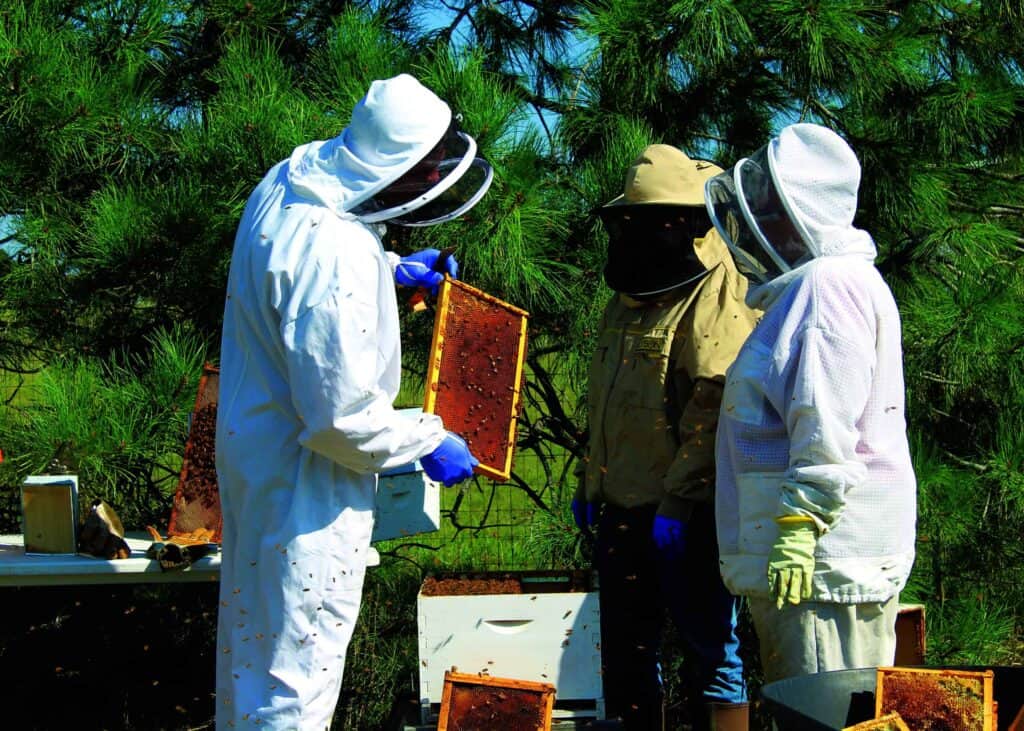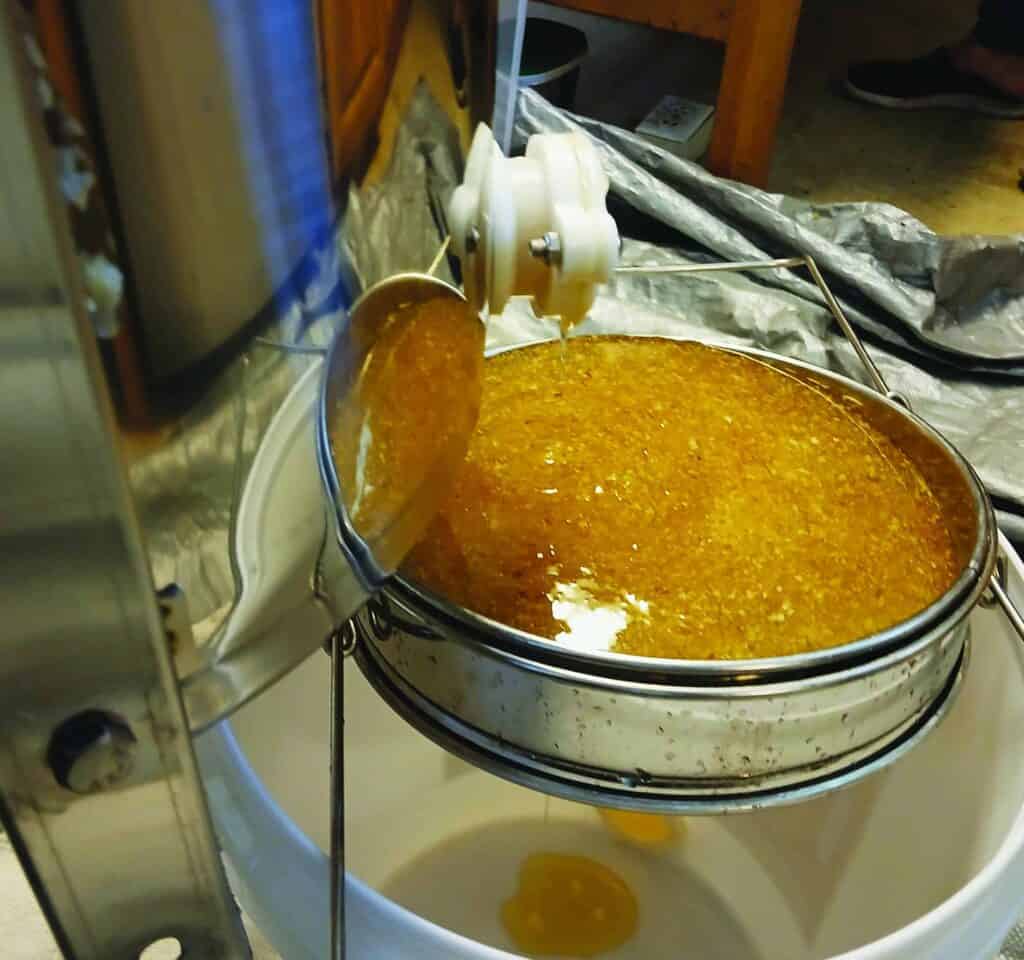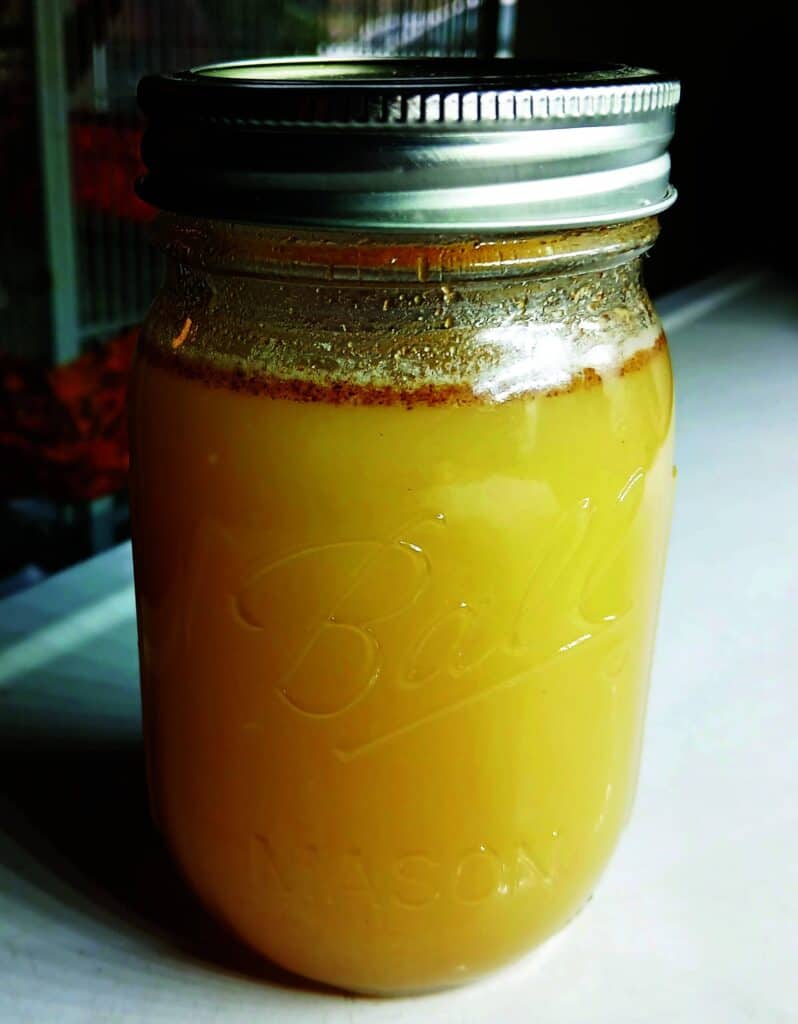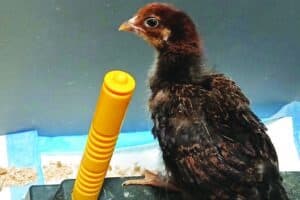Longtime local journalist Bill Radford and his wife, Margaret, live on 5 acres in the Falcon area with chickens, rabbits, dogs, cats, a flock of parakeets, goats and two horses. Contact Bill at billradford3@gmail.com.
A plentiful honey harvest
By Bill Radford
Those yellow flowers I wrote about a couple of months ago, the prairie coreopsis, lasted an amazingly long time, lingering into the first week or two of September.

That made for some very busy bees feasting on the flowers. And that, in turn, meant a lot of honey for us.
“My God, Margaret,” Phil Schommer and his bee buddy Seth Cook said upon opening our hives and seeing the frames filled with honey. My wife, Margaret, the beekeeper in the family, had found Phil on a Facebook bee group and had hired him to treat our bees for mites. (The parasitic varroa mite has been called beekeepers’ public enemy No. 1.) But when Margaret revealed she was also having some issues, like a possibly missing queen, Phil and Seth also offered to do a full hive inspection. (Everything was fine, by the way.)
It’s an example of how the beekeeping world is kind of one big family; everyone is happy to help and share their knowledge. Most beekeepers seem to have mentors; while Margaret has her own mentors, she also has served as mentor to another couple who just got into the bee world this year.
Phil says he’s always been fascinated by bees and their ways; his great-uncle, he notes, was a beekeeper in Germany. Plus, he adds, “My wife likes honey like it’s going out of style.” After years of buying honey from a friend, he took the plunge himself this year; he was going to start with one hive but now has four already.

One of his passions is catching bee swarms. “That’s kind of my thing,” he says. As the Colorado Beekeepers Association website explains, “A swarm occurs when a hive, wild or managed, becomes overcrowded and the old queen and about half of the original hive leaves to find a new home. Swarms are generally quite docile but they can be disconcerting due to the sheer numbers of bees within the swarm.” If a swarm tries to set up home near you and you’re not a fan of that idea, you can call a swarm hotline to get a beekeeper to come out, collect the bees and relocate them to a new home.
Phil lives in Widefield; Seth lives in the Falcon area, just a few miles east of us. (His bees also apparently gorged themselves on the coreopsis and his honey bounty was quite plentiful as well.) Phil and Seth met this spring while getting bees at Rocky Mountain Bee Supply in Colorado Springs and quickly became “inseparable best friends.” Listening to the two as they conducted the hive inspections was like listening to a comedy routine as they needled each other the whole time.
The inspections included bee stings: first Seth and then Phil, both on the hands, and then Margaret by a bee that somehow got inside her bee suit and stung her on the arm. Margaret wears thick gloves; Phil and Seth wore latex gloves that make it easier to get stung on the hands, but Phil prefers the delicate touch that those gloves provide. (He does wear thicker gloves, he says, when he knows the hive is going to be particularly irritated or when he is engaged in a risky enterprise like sticking his hand inside a tree to extract a swarm. But, bottom line, he says, “The stinging, that’s just part of the business.”)

His key advice for new beekeepers: Get two hives. “When you have two hives, you can compare them, apple to apple. Well, this one is doing better than this one, well, why is that? Well, that queen is laying a better pattern than this one, these bees are more active.” And with two hives, you can move eggs and larvae from one hive to support another if one is prospering and one is not.
We would see Phil a few more times as he returned for further mite treatments. He uses a nifty but costly Lorob Bees vaporizer, which sends an oxalic vapor into the hive that kills the mites but is harmless to the bees; the Lorob Bees vaporizer works much faster and more efficiently than previous treatments we’ve tried.
Meanwhile, we, of course, have been harvesting honey. The honey-filled frames that Phil and Seth helped Margaret extract actually made for the second harvest of the season. The first time yielded more than 2 gallons of honey; this time we ended up with twice that.
The harvesting is done with a hand-powered honey spinner that Margaret got this year; in past years, we’ve never had enough honey to bother harvesting. You put the frames into the spinner (three frames at a time) and spin away, the centrifugal force sends the honey flying out of the honeycombs and onto the walls of the spinner. The honey drips down to the bottom of the spinner, or extractor, and then you open a spigot to release the honey into the container of your choice. It is, as you might imagine, a somewhat messy and sticky enterprise.
But all that honey is going to make for a sweet little gift for a ton of friends this Christmas.





